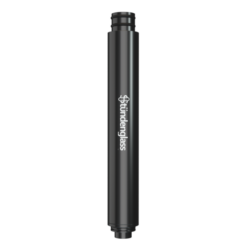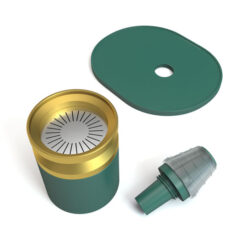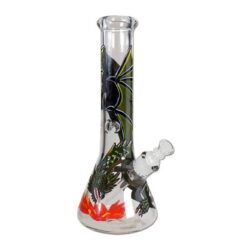There are many different strains in the cannabis family, but there are also many plants that have no relation to cannabis, despite looking eerily familiar to the plant. Where it is illegal to grow weed in some places, these plants are completely fine to grow for those who love the aesthetic of cannabis plants. If you are looking to camouflage your cannabis plants, plants that look like weed are the perfect option.
Which Plants Are Commonly Mistaken For Cannabis?
Here are some plants that you can use to disguise your cannabis crops:
- Scarlet Rosemallow
- Southern Marigold
- Kenaf
- Japanese Maple Tree
- Coralbush
- Spider Flower
- Cassava
- Chinese Chaste Tree
- Japanese Hop
Scarlet Rosemallow (Hibiscus coccineus)
Scarlet Rosemallow, also known as Texas Star hibiscus, features leaves with a similar aesthetic as cannabis plants. It thrives in marshes and swamps, and can grow up to 240 cm due to its hardy nature. Its size makes it difficult to confuse with indica or autoflowering species, but it easily resembles towering sativa variants.
When the plant is in its blooming season (all year long, excluding winter), it becomes much easier to distinguish. Scarlet Rosemallow produces five-petalled flowers that attract many pollinators such as butterflies, bees, and hummingbirds. Its likeness to cannabis lies within the leaves – they can grow up to 15 cm in width with long and distinct leaflets.
Most cannabis leaves have around 7 to 9 leaflets, but the Rosemallow has 3 large and 2 small leaflets. There are also some variants that have much smaller leaves that take away from their resemblance to cannabis. Some also have deep red stems, which can be another dead giveaway.
Growing Scarlet Rosemallow
If you are looking to grow Scarlet Rosemallow, you will need to keep it in a moist environment, especially during summer. The plant dies in winter, but the root system will stay intact, so you will have your towering plant back in spring.
Southern Marigold (Tagetes minuta)
The Southern Marigold does not look much like cannabis up close, but they are often mistaken for sativa plants from a distance. They are more commonly known as wild marigold or black mint and can be found all over the world. It is normally used as a culinary herb and can be found in a bottled paste form. It may, however, cause rashes and dermatitis to some people, so be sure to approach it with caution.
When you are a few metres away from Southern Marigold, the long, narrow stems and pointy leaves resemble the shape of sativa plants in their natural state. Upon closer inspection, you will see that the plant actually consists of a bunch of small leaves connected to the stem, as opposed to cannabis leaflets that protrude from a single leaf.
Growing Southern Marigold
To grow Southern Marigold, you will need to keep the seeds indoors to germinate for around two weeks. Once the plants are big enough to handle, you can move them to regular garden soil that receives full sunlight. They start to produce small white flowers in autumn.
Smoking Southern Marigold
You can also smoke the petals of Southern Marigold. It is mostly used in herbal blends for its subtle flavour as a supportive element, similar to chamomile and mint. There are no true and tested medical benefits to smoking this flower, animal testing has shown that it may be effective in speeding up healing processes and repairing connective tissues. All-in-all, its flavour and aroma makes for a good addition to your smokable herb blends.
Kenaf (Hibiscus cannabinus)
Kenaf can be easily mistaken for industrial hemp due to their tall and lanky appearance. Just like hemp, kenaf is also grown for its fibres, which can be used to make clothing, paper, insulation, potting mixes, and animal bedding. Their seeds are also used to make edible oils that are high in omega-3 and omega-6 fatty acids. Although you can incorporate Kenaf into herbal smoking blends, however, the benefits of smoking it are unknown. It’s better to use its seed-based oils.
Growing Kenaf
If you are looking to grow kenaf plants, you will need lots of space as they can grow up to 3.5 metres. They require sandy soil that provides easy drainage. Make sure to water your plants generously and keep the soil fed with mulch or compost. They also produce yellow, white, or purple flowers that resemble poppies.
Japanese Maple Tree (Acer palmatum)
The Japanese Maple Tree has a variety of cultivars with different leaf shapes and shades. Each variation has seven thin leaflets that are identical to cannabis leaves. Although the dark green variation is nearly indistinguishable from cannabis plants, the red variants will also make you look twice. The thick, wooden stem is definitely a tell-tale sign that this plant is not cannabis, but you can grow a few plants in a small container so that the stems are barely noticeable.
Growing Japanese Maple Trees
Japanese Maple Trees thrive in sunny spots with well-draining soil. They grow best in a semi-acidic to neutral pH between 4.5 and 7. Most varieties grow anywhere between 6 and 10 metres in height and 5 to 10 metres in width, so you will need to prune your plants regularly to give them some more shape.
Coralbush (Jatropha multifida)
The Coralbush is classified as a tree, but it does not grow quite as big. The plant features big fanned leaves with 9 leaflets that makes it appear to be an indica plant. If you choose to grow the plant in an average-sized container, it will take on the height and width of bushy indica variants, making it perfect to disguise your real strains.
This appearance is mostly present during its vegetative stage. Once it blooms, the Coralbush produces bright red bouquets that will set it apart from cannabis plants.
Growing Coralbush
The Coralbush is a tropical plant, so you will need to live close to the equator to grow this species in a natural environment. These plants require fertile soil that drains quickly and grows best in full sunlight. It is quite resistant to most pests, but be sure to check your plant regularly for aphids.
Spider Flower (Cleome spinosa)
Spider Flowers are perfect for concealing weed while also adding an aesthetic factor to your garden. During the early vegetative state, the 7 leaflets, dark green hue, and slender branches could not look more akin to weed. You will have to get up close and personal to spot its key difference: the Spider Flower has smooth and rounded leaflets, unlike the serrated edges of cannabis leaves.
As the Spider Flower moves into its flowering stage, it develops a thick main stem and loses its density. It also starts producing red, purple, or white flowers when in bloom, so you will still be able to keep your actual cannabis plants disguised if you plant them together.
Growing Spider Flowers
These plants grow to a maximum of 1.5 metres in height and 50 centimetres in width. They need well-drained soil and should be in a south-facing or west-facing position. Otherwise, they are not fussy about the pH of soil and are relatively pest-free.
Cassava (Manihot esculenta)
To the inexperienced eye, Cassava looks very similar to cannabis leaves used in commercials and advertisements. It may have 7 leaflets, but its white veins and waxy sheen makes it a lot easier to distinguish from weed than the others.
Although Cassava is good for disguising medium-sized cannabis plants, it is most commonly used for its tubers. These roots are filled with carbohydrates and are quite similar to potatoes when cooked.
Growing Cassava
For the best harvest, you will need to grow these plants in a tropical climate. They thrive in full-sun with well-draining soil. Some mulch is also a good option in the beginning of the season to feed the plants for a bountiful harvest.
Chinese Chaste Tree (Vitex negundo)
The Chinese Chaste Tree is so similar in appearance to the cannabis plant that it is by far one of the best options to disguise your weed. These small trees feature five leaflets per leaf, but they have serrated edges, making them the perfect cannabis look alike. As they can reach heights of 2 to 8 metres, they can conceal cannabis plants even better.
Aside from using these plants to disguise your weed, you can also look up on the fruits, roots, leaves, and flowers of the tree that have been used holistically in Southeast Asia.
Growing Chinese Chaste Trees
If your plant hardiness zone is between 6 and 9, the Chinese Chaste Tree will grow fine. You will need to shelter your plants from the wind and give them access to full sunlight. They thrive in acidic and slightly alkaline soil, but if the soil is too rich, the plant will retain too much moisture.
Japanese Hop (Humulus japonicus)
Japanese Hop looks like weed because it is actually related to cannabis. Both are part of the Cannabaceae family, along with hops and hackberries. The plants’ leaves have 7 distinct leaflets with serrated edges that are much broader than cannabis leaves. It features a similar growing pattern to weed, with a standalone main stem that sprawls out as a vine. The Japanese Hop even produces flowers with trichomes that give off heavily aromatic terpenes, making it perfect for disguising your cannabis plant and its scent.
Growing Japanese Hop
If you are looking to grow Japanese Hops, be prepared for plants that grow up to 10 metres in one growing season. It is best to grow these plants in containers to prevent the root system from dominating your garden. You can easily weave a Japanese Hop trellis between your cannabis plants to keep them hidden. In order to thrive, these plants require 6-8 hours of direct sunlight each day and rich soil with good drainage.
Smoking Japanese Hop
Hops give off a pleasant aroma and flavour when smoked. They also have sedative and hypnotic properties, but it is recommended to smoke in a blend since it is way too strong when smoked on its own. Hops can actually be considered as a drug since it contains Lupulone, which affects serotonin receptors and stimulates relaxation. Before smoking Japanese Hop, be sure to do your research and use it in moderation.
If you are looking to be more discreet about growing cannabis, there are many plants you can grow to disguise your weed plants. The differences may be obvious to those who are particularly familiar with weed, but others will find it difficult to spot. Make sure you choose plants that will grow well in your environmental conditions for an aesthetic and camouflaging garden.
-
Stundenglass – Mouthpiece Replacement
R215.00 -
Dr. Greenthumbs x Stundenglass – Hookah Bowl Assembly
R1,250.00 -
Black Leaf – Glass Shotgun Smoking Pipe
R150.00 -
Black Leaf – Hand Painted Glass Bong Ice – Smaug
R1,150.00Original price was: R1,150.00.R850.00Current price is: R850.00.










